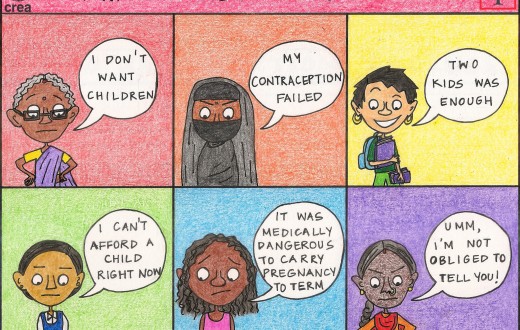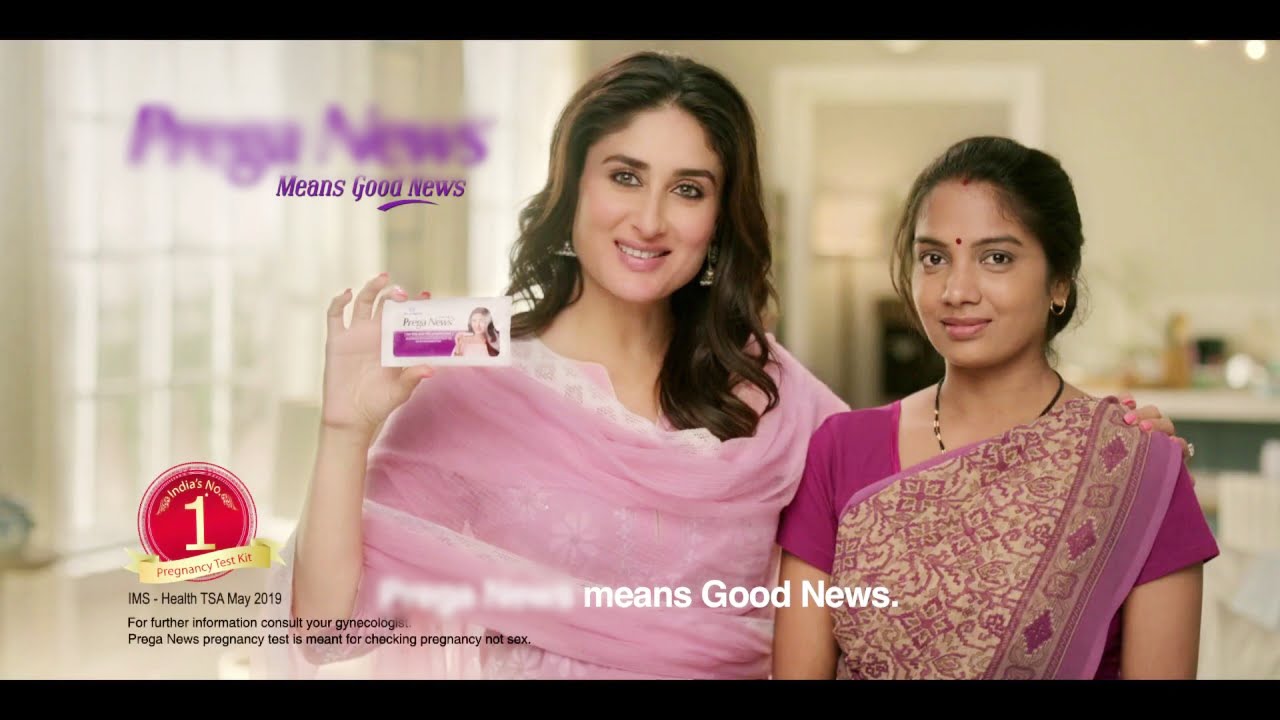TW: Mention of abortions, pregnancy
In India and its patriarchal society, where power is usually vested in the hands of cis gender-heterosexual men, The languages are also shaped by the same patriarchal structure. The languages, which we usually use, stigmatise and perpetuate gender discrimination, bodily autonomy, and the choice and rights of marginalised genders. It is, therefore, important to look at how languages, which form an integral part of our socialisation process, are being shaped and reshaped by agents of socialisation and by those in power and control of resources and how these languages and media shape narratives around abortion.
The Brahmanical patriarchal structure in India controls every aspect of a woman’s life, putting the control of sexuality of women at the centre. One of the reasons why it is done is for the continuation of the male lineage. Therefore, when a woman gets pregnant, in a cis gender-heterosexual marriage bond, it is glorified.
Pregnancy is said to have many cultural and religious beliefs attached to it. It defines what a “family” is for a lot of people in India and all around the world. In fact, a family is said to be complete only when you have a child (preferably, biological). It is looked up as an “ideal” form of parenthood while other forms of parenthood, which are outside the norm of a heterosexual marriage bond are looked down upon and stigmatised.
Also read: 16 Days Of Activism Against GBV: Navigating Abortion Stigma As Menstruators
With child birth and pregnancy being pedestalised, abortion remains stereotyped and condemned. Terms like “foeticide”, “kill an unborn child” are examples of stigmatisation of abortion. The word which can be used instead of these is “ending a pregnancy”. Furthermore, “unsafe abortion” and “illegal abortion” are often used interchangeably. The former refers to abortion performed by untrained providers or when women are unable to safely undergo a medical abortion while the latter refers to violation of the law but can be safe.
With child birth and pregnancy being pedestalised, abortion remains stereotyped and condemned. Terms like “feticide”, “kill an unborn child” are examples of stigmatisation of abortion. The word which can be used instead of these is “ending a pregnancy”. Furthermore, “unsafe abortion” and “illegal abortion” are often used interchangeably. The former refers to abortion performed by untrained providers or when women are unable to safely undergo a medical abortion while the latter refers to violation of the law but can be safe.
These terms and languages are often shaped by the content we consume and vice versa. One of the most powerful tools from which we learn is media, like advertisements, be it print or digital media. Advertisements, ranging from 20 to 60 seconds provide an avenue for disseminating a lot of information. Again, advertisements too are culturally embedded and shaped.
Let us take the example of this video that shows how a couple, who do not have access to proper contraceptive measures, conceive children until they realise the cost of raising a child. The man here is seen saying “Sambhal lunga mai.” (I will handle, referring to withdrawal or pull out) but fails to do so, which forces the woman to visit a doctor, who recommends her Copper T and contraceptive injections.
This advertisement is multi-layered. It shows the unwillingness of the man to use a contraceptive (such as a condom) and then seen forcing his will on his wife which leads to unplanned pregnancies. The “control” which the woman gets at the end is out of no other choice or decision left in her hands. Such advertisements, shown in a positive light to prevent unwanted and unplanned pregnancies, lead to perpetuating norms and stigmas of the patriarchal structure of a family and the power which cis gender-heterosexual men have over women.. It also shows the lack as well as the need of a comprehensive sexuality education (CSE) in our country which makes people take uninformed decisions.
Along with the need for talking about CSE, there is also a need to sensitise people in the field of medicine about the various intersectional identities which exist in India. When we talk about gender in India, we cannot disassociate it from caste and class.
Various scholars like Tulsi Patel in ‘Global Standards in Childbirth Practices’ have shown through their ethnographies how pregnant people who want to access medical services are treated in the hospitals in rural areas. Patel talks about how the attitudes of hospital staff differed for women according to their class, caste and social capital. In urban areas too the reality is no different. Caste dynamics seep in through various overt and covert ways.
This ad by Prega News of Kareena Kapoor saying that pregnancy tests are just a “5 minutes affair” and denying her domestic worker a leave on the same basis shows the large class-caste divide among women in India and the apathy towards women from marginalised categories.
An advertisement that shows Kareena Kapoor saying pregnancy tests are just a “5 minutes affair” and denying her domestic worker a leave on the same basis shows the large class-caste divide among women in India and the apathy towards women from marginalised categories.
Another observation which can be made with respect to advertisements is how pregnancy is termed as “good news” and motherhood is glorified and how many campaigns are framed around it. Here again, we can see how language plays its role. Using “good” makes a value judgement and divides it into binaries.
This might be at times used as a subtle way of showing abortion in the negative light. Coming to visuals and images, use of child figures or explicit shock images should be avoided as it can be triggering to many, instead the focus should shift from the child to the pregnant person. More diverse depictions, such as women from different ages, marital and socio-economic status should be shown so as to create an image that pregnancy is not limited to one particular bracket.

The depictions that are currently there in the media around pregnancy mostly focus on cis-het women as being a part of a “family”, which fails to focus on what the pregnant person’s choices and decisions are. For a cis gender- heterosexual woman, who is otherwise subjugated, pregnancy is a time when she is taken utmost care of by her family. However, this act of taking “care” is also at times glorified by advertisements.
This ad of Pregakem with the tagline “support the change, support your partner” shows how a man (here the husband), otherwise not invested or ignorant about most things which usually happens in the household, suddenly turns into a “caring husband” because his wife is pregnant. It glorifies the work which a man does, something that should be considered as a basic responsibility and not be applauded as an extraordinary achievement.
The tagline itself which says “support your partner” makes us think if the burden of childbirth is just on the pregnant person. It also makes us wonder if motherhood (depicted through cis-het women, mostly) is the only way through which women will attain respect, love, equality and care in our society? Will the same care be provided after the childbirth, or will the responsibilities of bringing up a child follow the traditional family structure where the mother has to take care of everything?
In fact, data and studies on postnatal care show how it has remained unimaginably low despite government programmes, due to lack of sensitisation and counselling for postnatal care and also highlights the role that the families should play post childbirth.
Also read: Dissecting Anti-Abortion Mentality In Malayalam Cinema Through ‘Kana Kanmani’ & ‘Aval’
There are also ads which try to show how women are complete in themselves but such consciousness in ads have started taking ground recently, even though the patriarchal undertones remain. These ads are only a few examples of the huge content available through digital and print media, which have shaped our perspective since its inception.
We need to learn, unlearn and relearn a lot of things, disseminate a lot of accurate information in a healthy, sex positive and pleasure-affirmative way so as to rectify our mistakes, our biases and our discriminations. Along with that, different measures like age-appropriate Comprehensive Sexuality Education should be made available and accessible to everyone, especially to adolescents in schools.
We need to learn, unlearn and relearn a lot of things, disseminate a lot of accurate information in a healthy, sex positive and pleasure-affirmative way so as to rectify our mistakes, our biases and our discriminations. Along with that, different measures like age-appropriate Comprehensive Sexuality Education should be made available and accessible to everyone, especially to adolescents in schools.
A positive approach, which is rights-based, should be brought about when we see or read about abortions, especially in media. Access and knowledge about safe abortions should be provided. Bodies of marginalised genders should not just remain as a mere political tool but rights, choices and autonomy should be provided to them.
(Note: The article talks and analyses the ads which are cis gender-heterosexual in nature)
This article is the second in a series in which Rangeen Khidki writes for Feminism In India on how menstruators are not allowed control and autonomy over their body, recognising the same as violence and violation of human rights under the 2021 theme of 16 Days Of Activism, which is Gender Based Violence.
Shatarupa is a masters student of Sociology. She is interested in research in the field of gender, sexuality and education. You can find her on Linkedin.
Featured image source: YouTube
About the author(s)
Rangeen Khidki works with urban as well as rural youth and women on Gender & Sexuality, Sexual Reproductive Health Rights, mental health, education and life skills.





